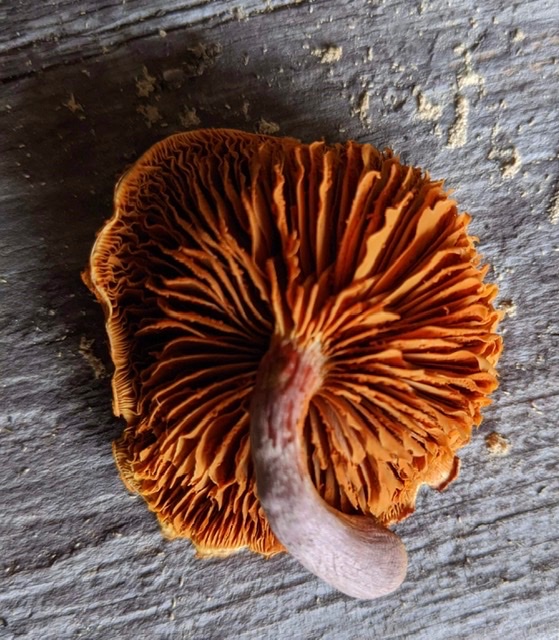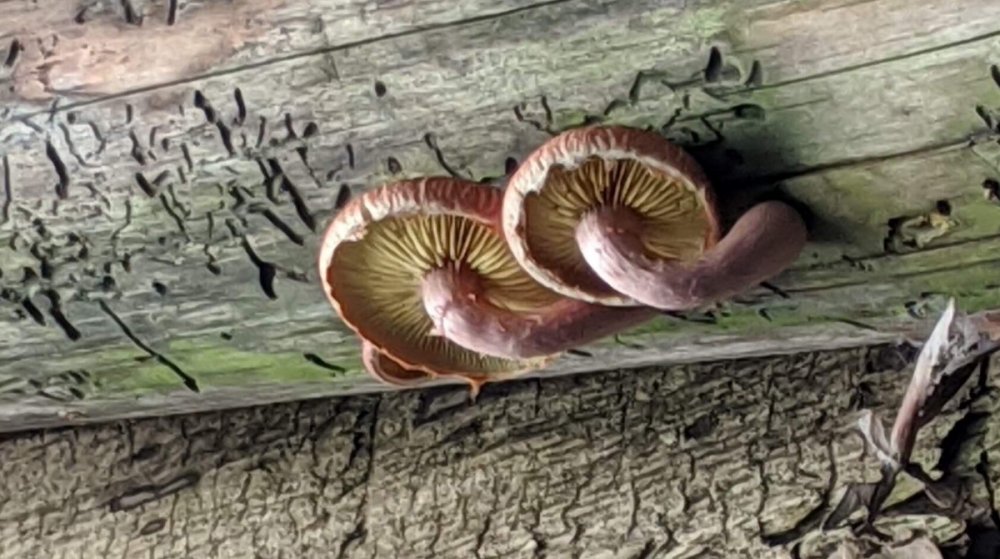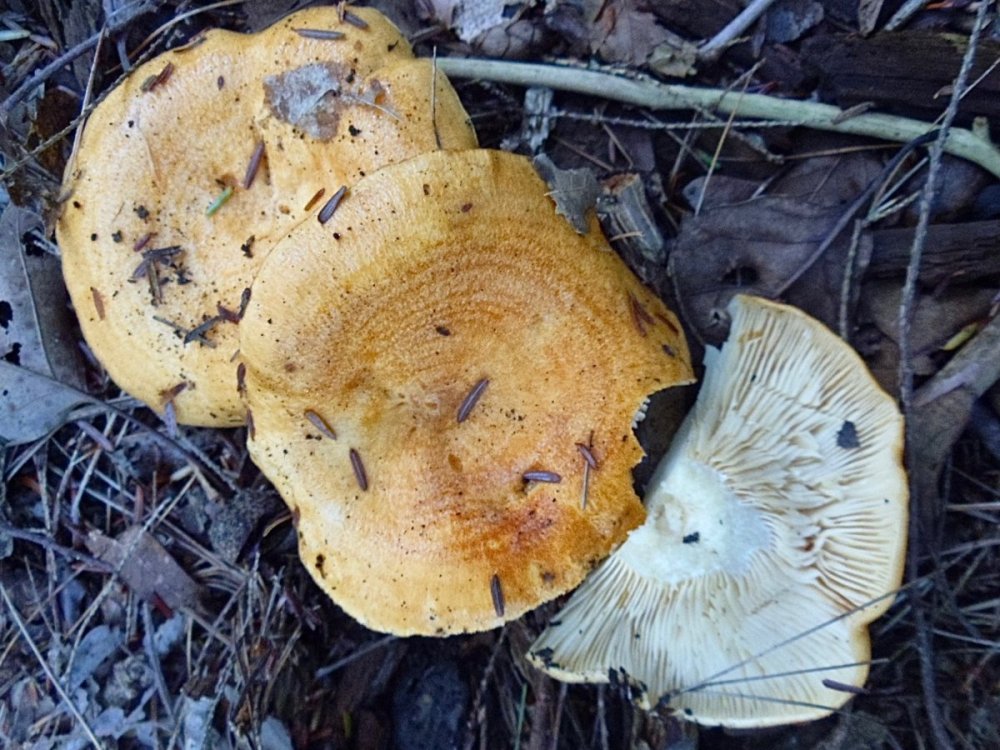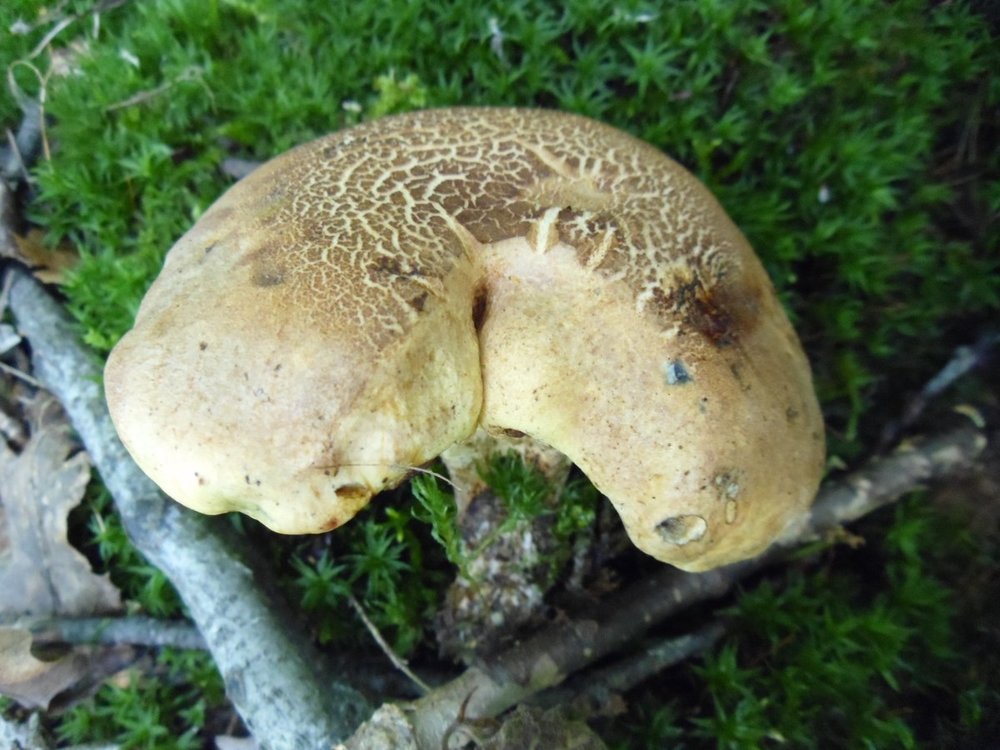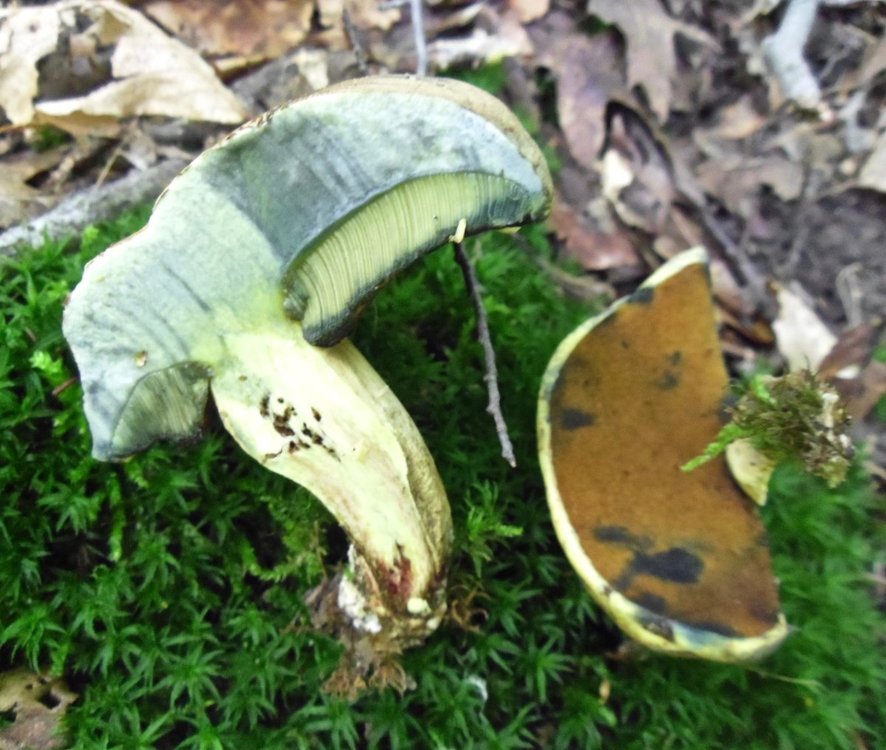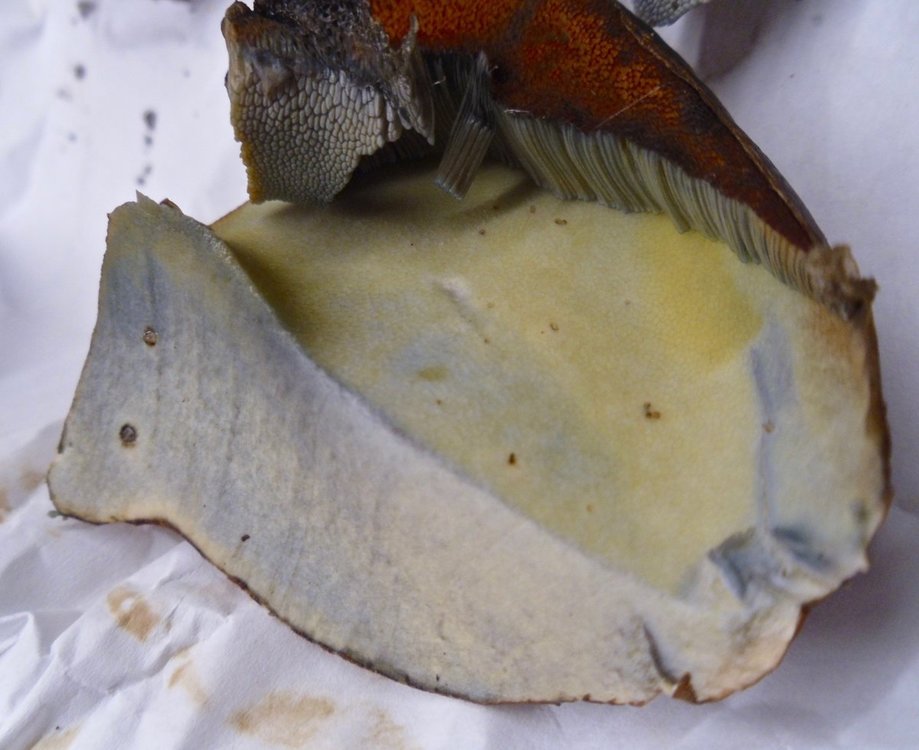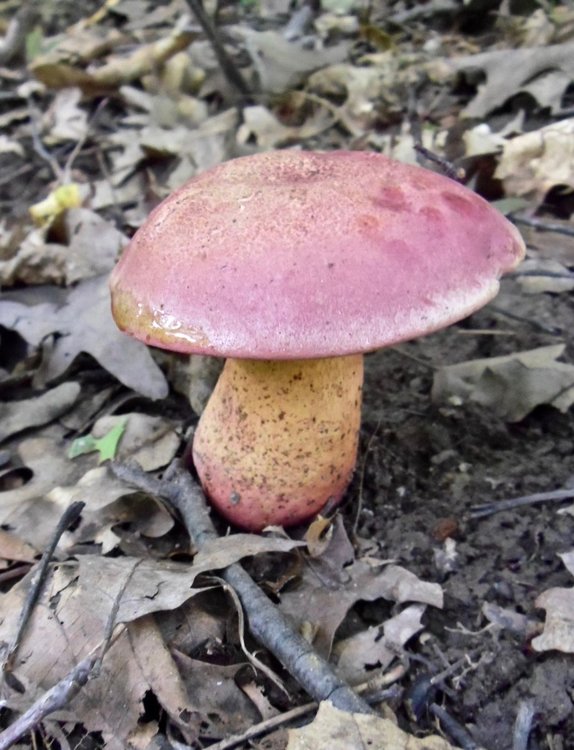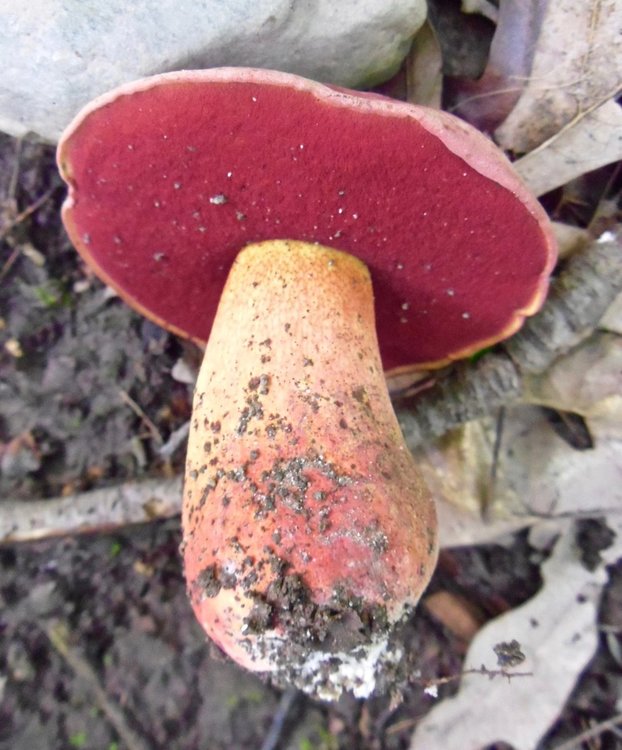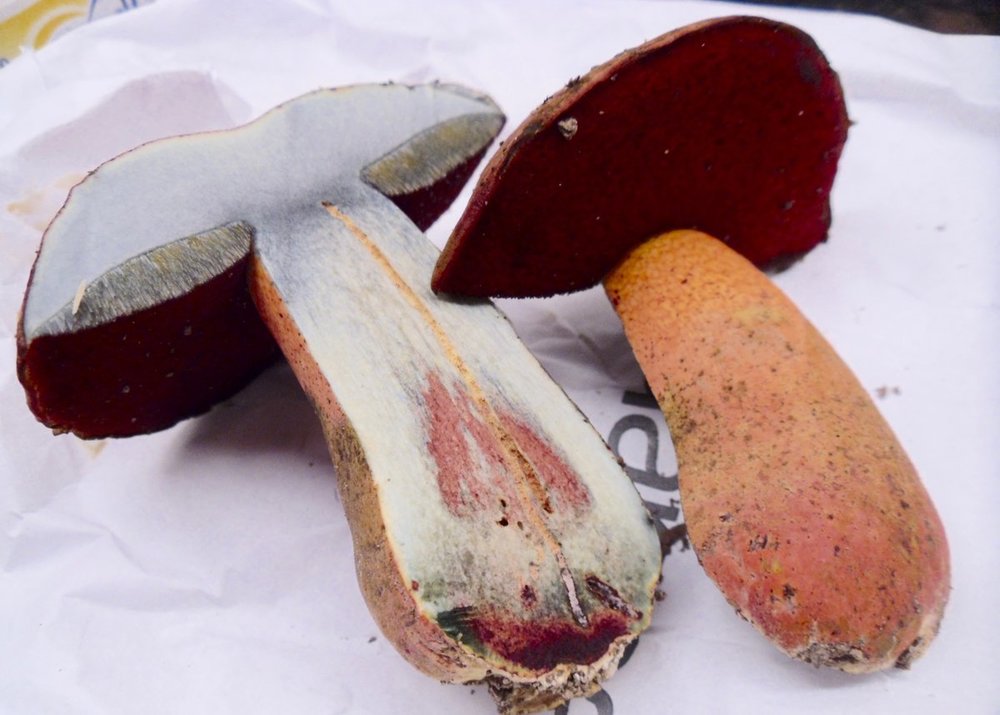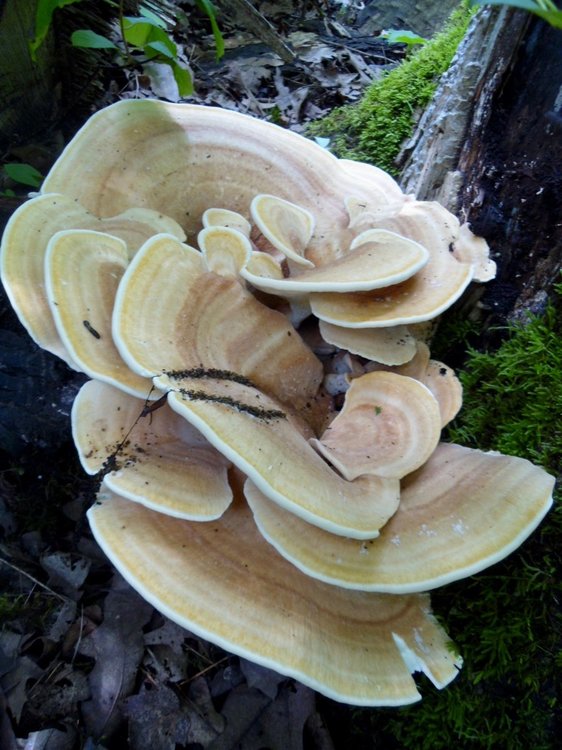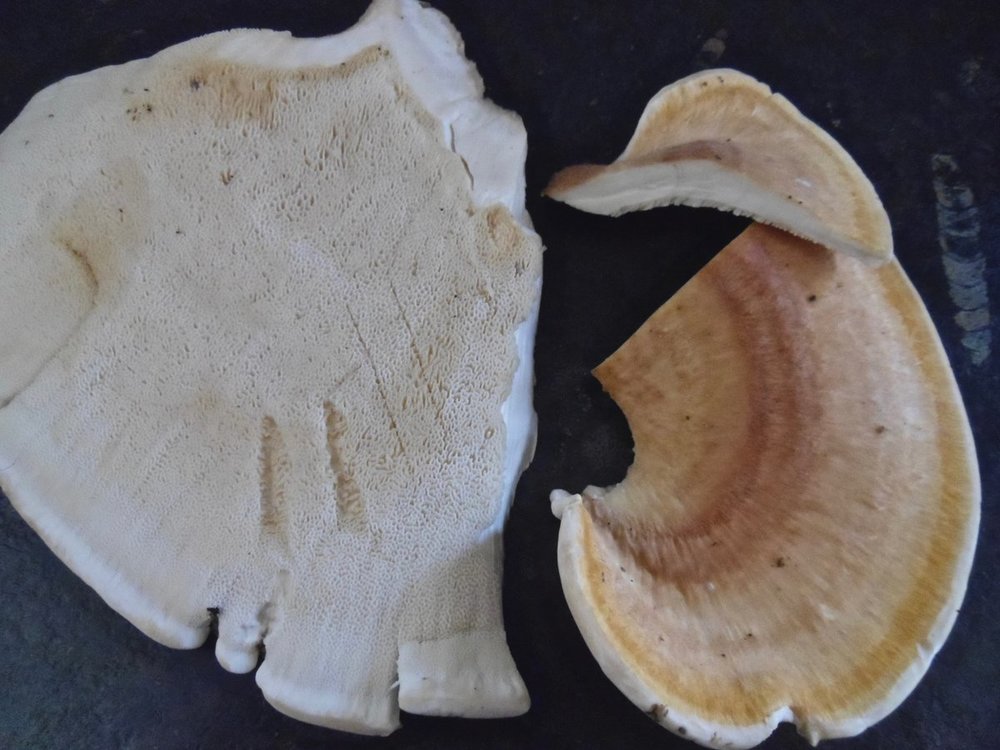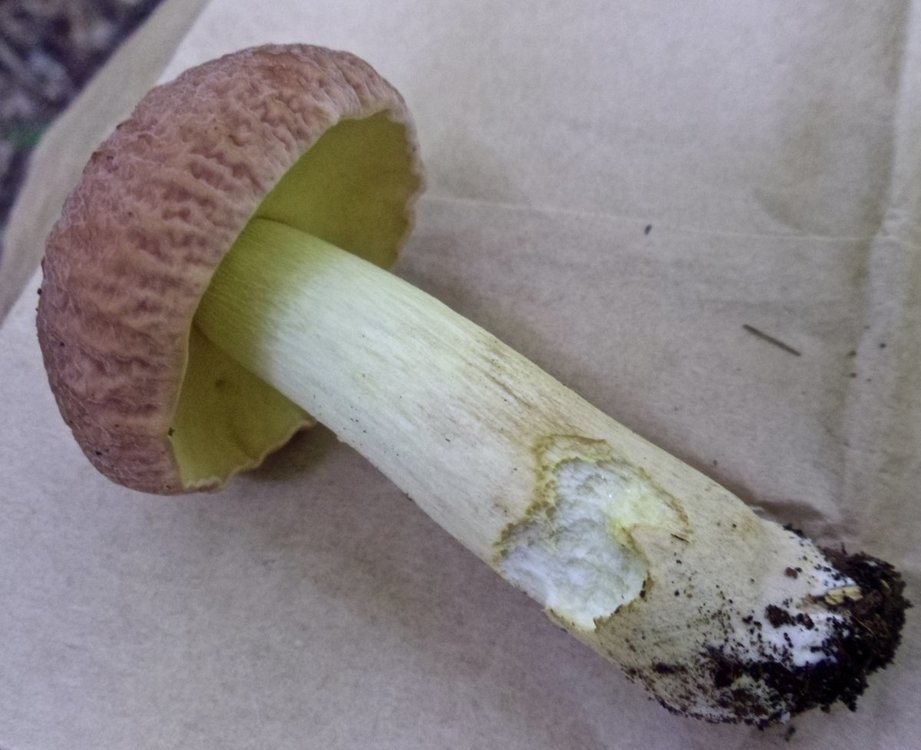-
Posts
176 -
Joined
-
Last visited
Everything posted by shroomersue
-
A feature of shaggy parasol is when cut in half, you will see the flesh turning orangey.
-
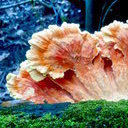
Wrinkled Peach Rhodotus palmatus ?
shroomersue replied to shroomersue's topic in Identifying Mushrooms
-

Wrinkled Peach Rhodotus palmatus ?
shroomersue replied to shroomersue's topic in Identifying Mushrooms
Dave, thankyou, i believe this is it! The Yellow gilled gymnopilus! Did not notice the veil ring. Good eye! -
My friend who works at a pioneer village sent me this cool pic to try and identify this mushroom. It was growing high up under eave of a building constructed of old hewn logs. This example was growing there in mid September. Unfortunately no other pics were done. I think its Rhodotus palmatus , the Wrinkled Peach. Any other suggestions?
-
Hasn’t been that drought prone here in London ontario this past month. But the fungus was growing from a higher elevation in a hardwood forest. So it could be stunted growth of whatever it is.
-
No staining of pores. Is the mazelike pores not a defining i.d. factor, Dave? Abortiporous biennis is interesting proposal! Observed the flesh was dry woodier like an overripe Chicken of the Woods.
-
https://www.messiah.edu/Oakes/fungi_on_wood/poroid fungi/species pages/Bondarzewia berkeleyi.htm me thinks its Berkeleys... knobby fingers when young and mazelike pore structure.
-
Thinking that I found my first seasonal Hen of the Woods, after getting it home and looking more closely, is this a young Berkeleys polypore? The smell is correct for a Hen. The colour seems to be very light for a Hen. Found at the base of an oak tree.
-
Yes, old chicken of the woods.
-
This example was the lone one growing and I hurriedly removed it by cutting cuz it was so firmly embedded in the moss undergrowth on a popular trail east of Huntsville, Ontario. It was also slow bluing when cut. Dave, you can post on MO with photos for more input. This can’t be elusive peckii, do you think? If you post, can you give me link so i can follow it? Thanks for the info!
-
This sturdy youngun was growing under pine/hemlock in a moss bed. Cap 2.5 in across. Bruised blue on stipe. Bruised dark blue on shallow lemon yellow pores. Dense yellowish flesh Bluing when cut in half. After half hour fade to brown. Noticed red reticulation on stem. Some red larvae holes. Taste unremarkable. A butryboletus type maybe.?
-
so I found specimens at same area, did spore print. It’s olive brown. Dave, yer right again! Was thrown off by the rosy caps! Thx!
-
Yup those are chestnut boletes. Hopefully no bugs in em ! The hollow pithy stipe is key.
-
Unfortunately they are compost material now. So no spore print. Next time i won’t forget!
-
These were growing in a hardwood forest with oak, maple, beech. Reddish pink caps 3 to 6 in across. Red Reticulation on half of stipe with yellow at top. Red pores and stipe bruised. Cap blueing slowly when cut. Red worm holes. Flesh yellowish. Taste mild pleasant fruity. I think these are boletus rubroflammeus. Am I correct? Are there other red netted boletes to consider? The brilliant pores and stipe pic was taken indoors. Just wanted a closer detail of pores and red reticulation. Also, before I found these pink capped ones I came across these lighter capped orange pores ones -see last pic. Are they of the same type except younger, older?
-
There were oaks nearby too, but definitely under a stand of hemlock. You can see the hemlock needle deposits on their caps surface. Psammicola seems to have hemlock as associate too. http://www.fungikingdom.net/myco-facts-by-dianna-smith/lactarius--lactifluus-prese.html
-
Found under Hemlock in southwestern ontario, these orange capped lactarius I am finding again for past two years. Now, theres no latex to see, looked on youngun and old ones, no green tinging, and they are more white on the undersides than orange as other lactarius I have identified. The largest cap i found was 6 inches across.They tasted acrid to me, so did not collect. Psammicola?
-
I would agree to your i.d. Those maze pores are right for Berkleys polypore.
-
Thank you Dave. And the sample went into the composter and phew! Some odour there!
-
These were growing prolifically in a hardwood forest in southwestern ontario, some quite large at maturity 6 inch caps with light brown cap turning browner and underside pores also turning more brown. Blueing of cap, pores, stipe. Brown olive spore print. Taste mild, smell a bit funky. The pores could be peeled away easily from yellowish flesh. I need a bit of help to i.d. but i'll take a stab at it. Boletus vermiculosoides ?
-
This rosy beauty was found growing singularly under oak in southwestern ontario. Cap just under 4 inches wide. Red netting on stipe. Cap and stipe did not bruise, but when cut blueing happened and faded to a grey in 10 minutes. Smell was like old fruit. Taste unremarkable. Last pic was shot indoors after i came home with sliced specimen, 2 hrs later. I am thinking Rubroboletus rhodosanguineus, any other possibilities?
-

Berkeley's Polypore and has anybody tried these?
shroomersue replied to shroomersue's topic in General Mushroom Discussion
Ha, i just noticed i said dried them instead of TRIED them. Unless you can dry them too for future use. Well, chefs out there, anybody out there? -
Found this nice florette of Berkeley's polypore (Bondarzewia berkeleyi) after the rain yesterday. No bruise discoloration, and the maze like white pores underneath lead me to this i.d. Now has anyone tried these out in recipes? I hear they are like chicken of the woods but a firmer texture. These ones were quite pliable to the touch. Has anyone dried them?
-
-
Compare to caloboletus ...inedulis maybe


